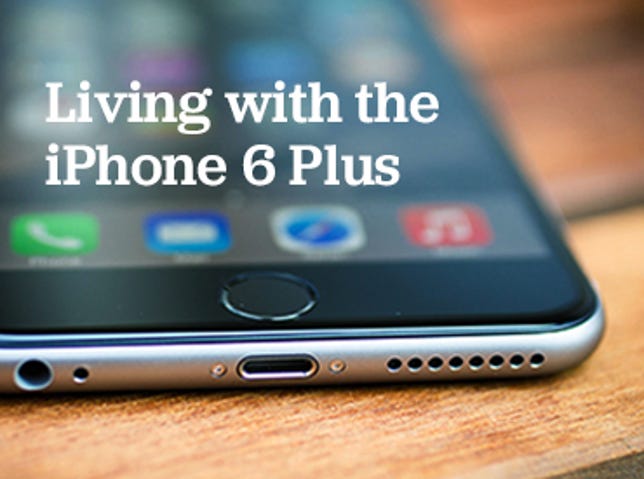
CNET
Welcome to the second in a series of regular updates to our iPhone 6 and iPhone 6 Plus reviews. If you missed the first installment, it’s here, and if you’re one of the many asking “Why Note 3 and not the Note 4?” It’s for a variety of reasons. First, I’ve been a Note 3 owner for many months now and with it I can provide the most substantial comparisons. Second, the updates to the Note 4 are impressive, but don’t radically change the way you use it. Finally, the thing isn’t on the market yet, and it’s a bit hard for me to compare against something I don’t actually have.
Looking back a year, after spending plenty of time with the iPhone 5S, I seriously contemplated switching away from my then second-generation Samsung Galaxy Note. The Note 2 was, by late September, rather long in the tooth and, as is often the way with Android phones, becoming unresponsive at times thanks to many months of apps coming and going.
So, Apple’s shiny new hotness was quite a temptation…thin and tall and all-aluminum, with a clean refreshed OS and seamless performance. Two things held me back. One was after typing on the Note for so long, the iPhone felt like a little toy in my hands. It just seemed impossibly small.
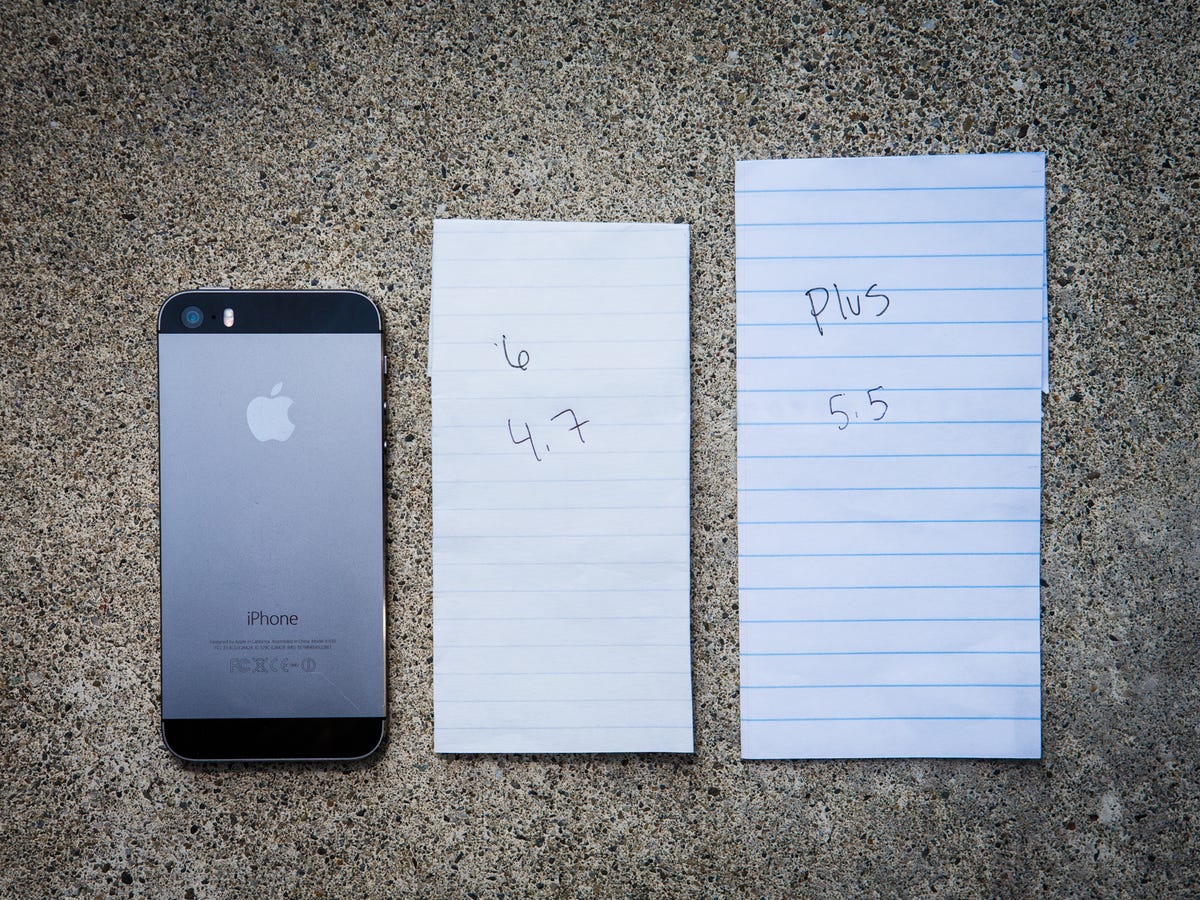

Josh Miller/CNET
But, more problematic was the keyboard. I’d become so tied to SwiftKey on Android that I could not tolerate the stock iOS keyboard. Revolutionary when introduced on the first iPhone, typing on iOS in 2013 felt, to me, nothing short of archaic. And there was no other option.
That changes with iOS 8, with Apple now enabling third-party keyboards. SwiftKey was one of the first to sign up, and had me again pondering a change to iOS. But it was only in my testing with the iPhone 6 and 6 Plus that I came to realize that while Apple had opened the playing field, the rules still seem very strict.
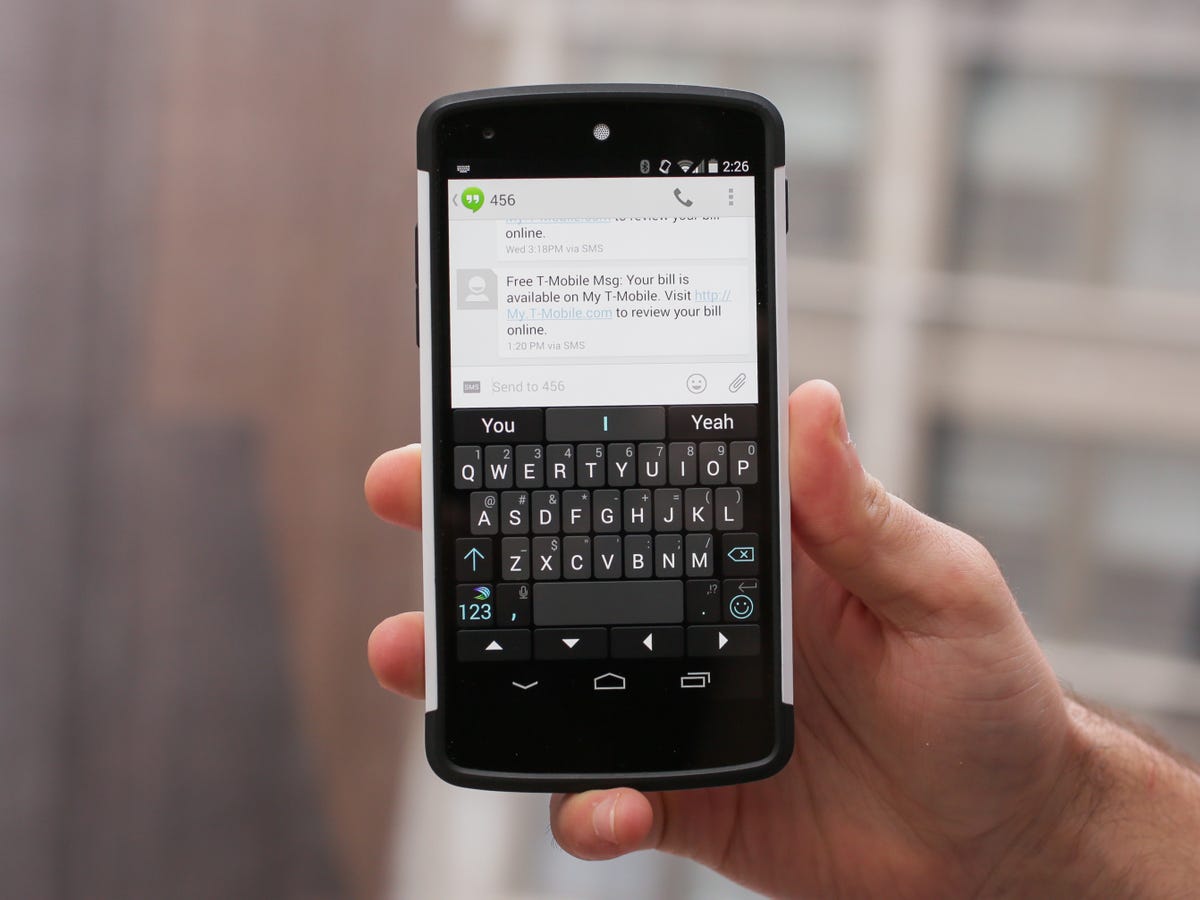

Sarah Tew/CNET
SwiftKey on iOS is a nice step forward over the new stock keyboard. Both will predict the next word for you, guesses that appear over the top of the keyboard for quick tapping. However, SwiftKey syncs with your Facebook and Google accounts, learning what you type to make even better predictions in the long-run.
It really is quite smart. I’ve been following the progress of the Google Lunar XPrize teams over the past few months, and SwiftKey has been paying attention. At this point if I just type “Go” into my Note 3 it suggests “Google.” I can then hit the spacebar to insert that, and SwiftKey then suggests “Lunar.” After that comes “XPrize.” So, to type “Google Lunar XPrize” into an email requires just three button presses: “G” then “O” then space-space-space.
Sadly, it doesn’t work like that on iOS.
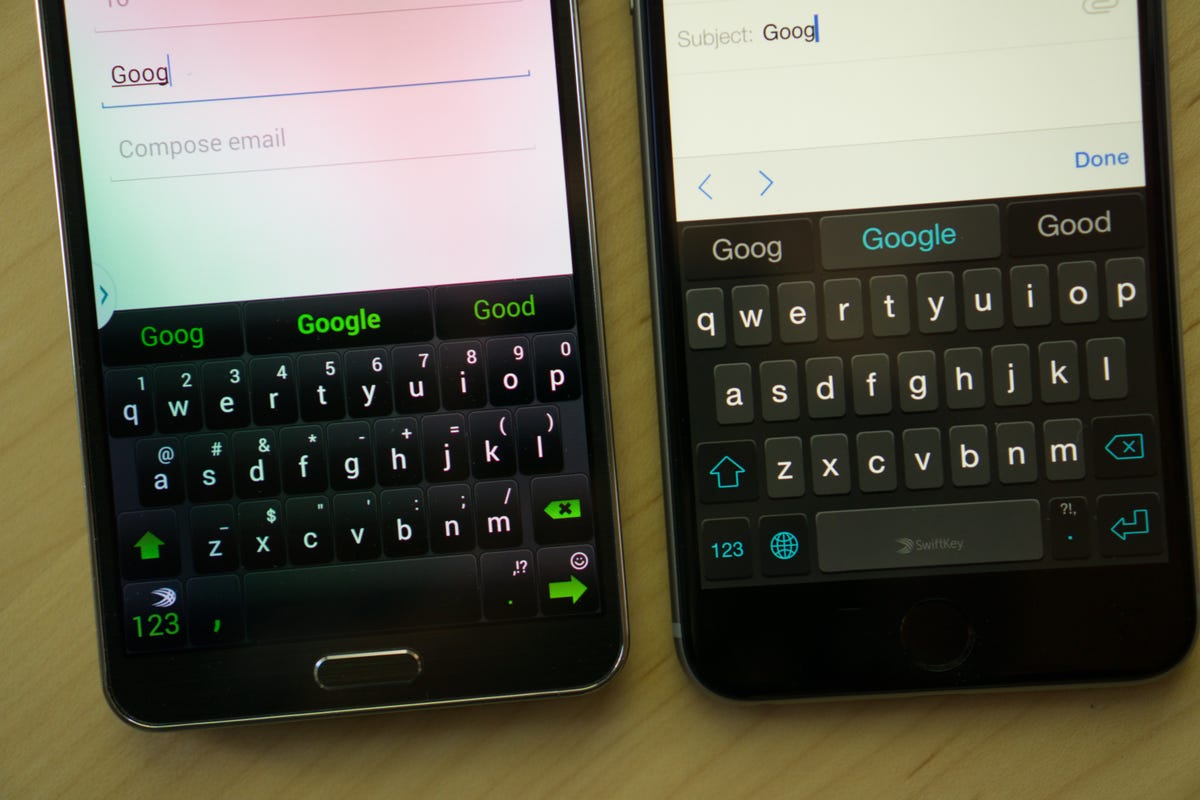

Tim Stevens/CNET
If I type “Go” on iOS, SwiftKey does indeed suggest “Google,” and hitting space does select it. And now, after a week, SwiftKey is suggesting “Lunar” as the second word. However, a second tap of the space bar just puts in a period, like the stock keyboard. You need to reach up and tap each successive, predicted word rather than just banging on the spacebar. I know, that sounds like a minor difference, but it throws off your typing rhythm. After getting used to this feature for years on Android, I’m really missing it here.
More troubling is the removal of the secondary functions for keys. A long-press on the “d” key on Android, for example, gets you the ampersand symbol (&). On iOS, a long-press of the “d” key gets you…a “d.” This is especially annoying when you want numbers, which are easily accessible on Android — doubly so if you choose to add a separate number row to the top of the keyboard. That’s not an option on iOS.
That feature, sadly, seems to be specifically prohibited by Apple’s developer documentation for third-party keyboards, disallowing any sort of pop-up crossing the boundary above the keys, making implementation of this tricky.
I spoke with SwiftKey’s CMO Joe Braidwood about this and other features that are missing in the iOS flavor of my favorite keyboard. While he wouldn’t tell me specifically which features were left off due to platform restrictions, he did point to timeline as a major contributing factor.
Though SwiftKey already had an iOS app (SwiftKey Note, now renamed to “Note by SwiftKey” to avoid confusion), it wasn’t able to be directly ported here. When did development actually begin? “WWDC day,” says Joe. That means just over three months to go from scratch to shippable product. “Not the largest and most luxurious time frame, as you can imagine.”
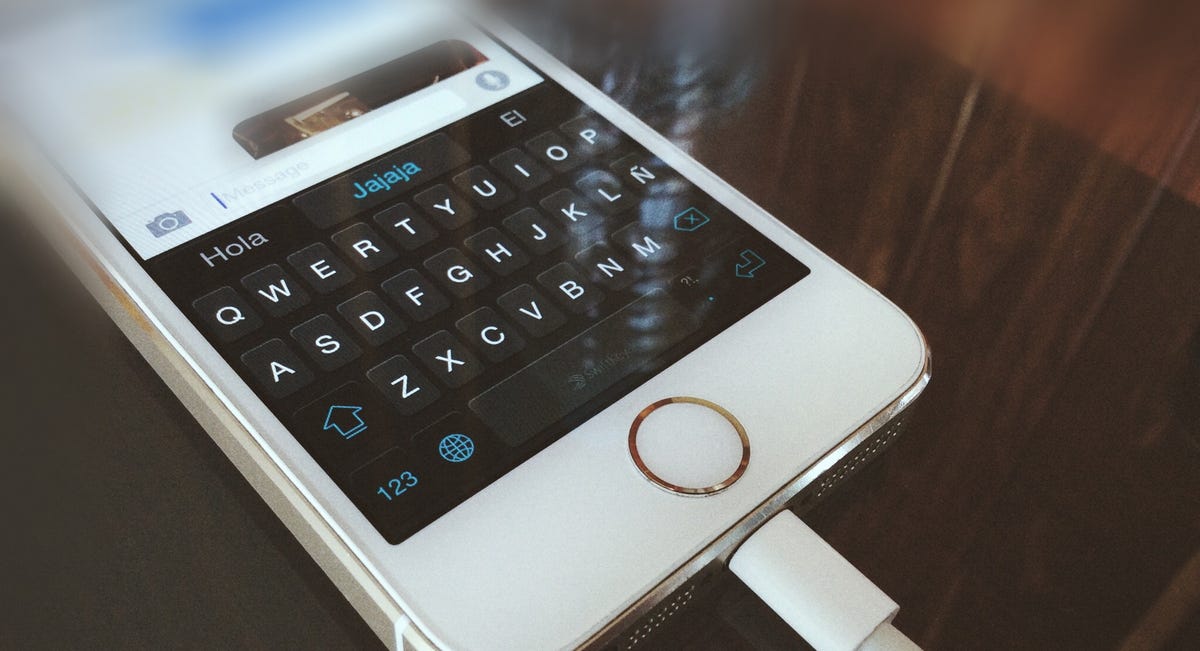

Oscar Gutiérrez/CNET
So some features had to be left by the wayside, and others were tweaked to make the keyboard more familiar to iOS users — tweaks like the double-space change. That said, plenty of the goodness is still there, including cloud syncing of your typing preferences, the ability to type away without using inserting spaces between words, and switching between languages on the fly. And, there’s hope for many more options and tweaks to come on iOS, the sort of extensive customization that Android users are familiar with.
In fact, as SwiftKey now sits on top of the ratings as most popular free app in the App Store, Braidwood was pleasantly surprised to find how similar the feedback is between the two platforms. These new downloaders, it seems, want the same sorts of customizations that SwiftKey veterans enjoy. “Maybe users of iOS are not so different than Android users after all,” ponders Braidwood.
The SwiftKey CMO wouldn’t confirm which, if any, enhancements are coming to future versions on iOS, but given the popularity of the app there’s no doubt it’ll be getting plenty of internal attention — attention from Apple as well, one has to assume. Might that mean a little more flexibility and power granted to iOS keyboard developers down the road? “I hope so,” Braidwood told me. “That would be wonderful.”



